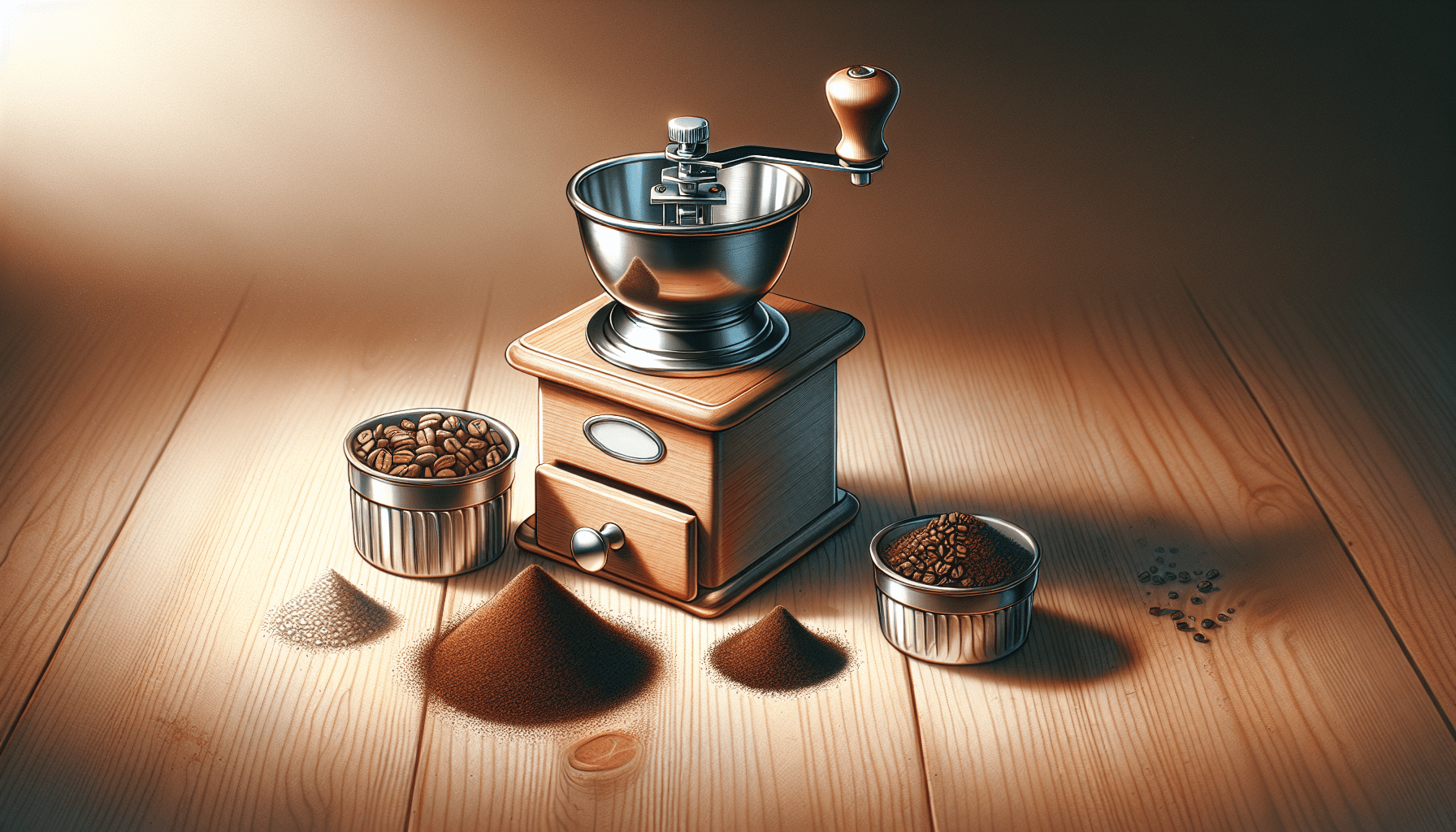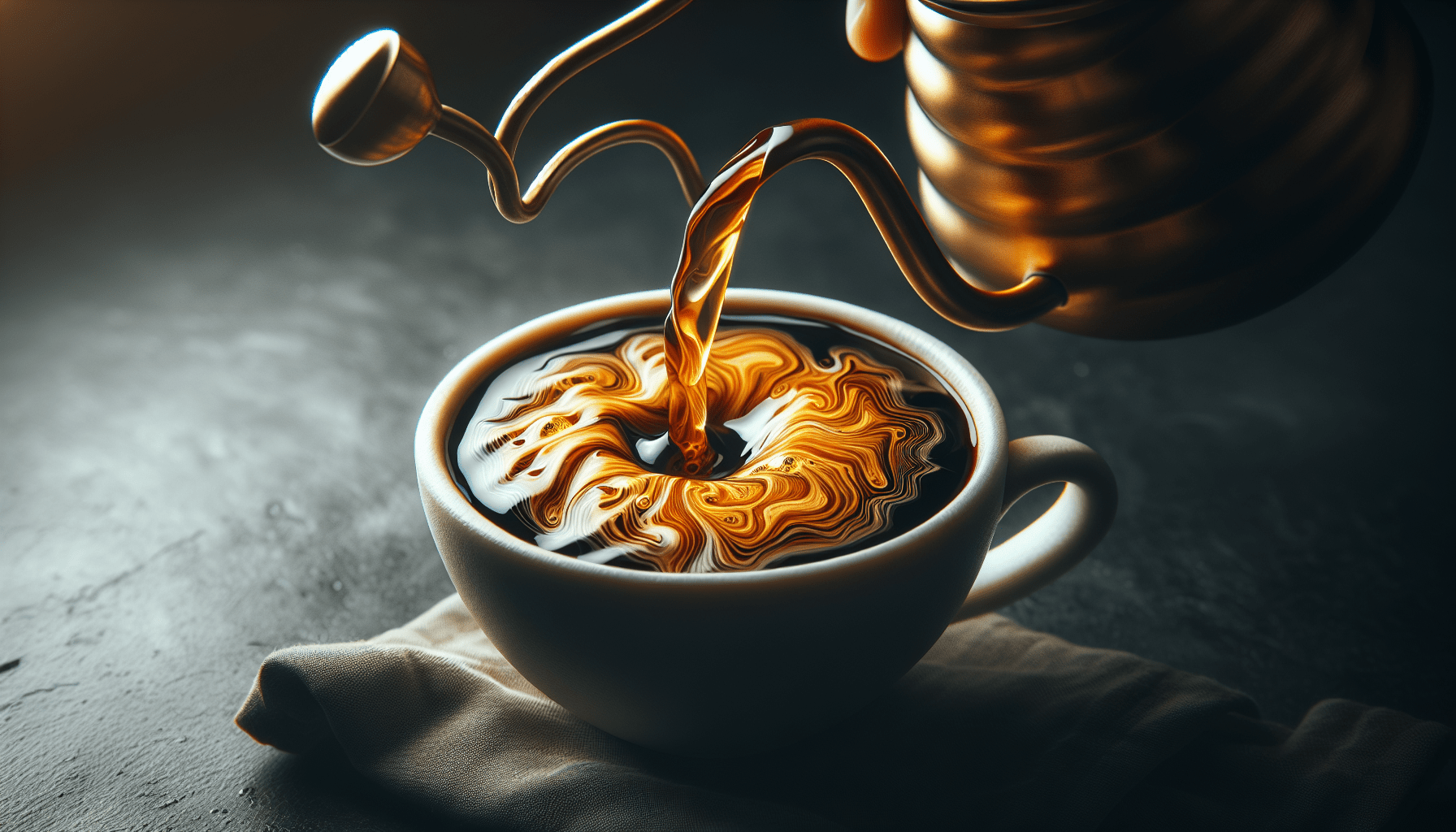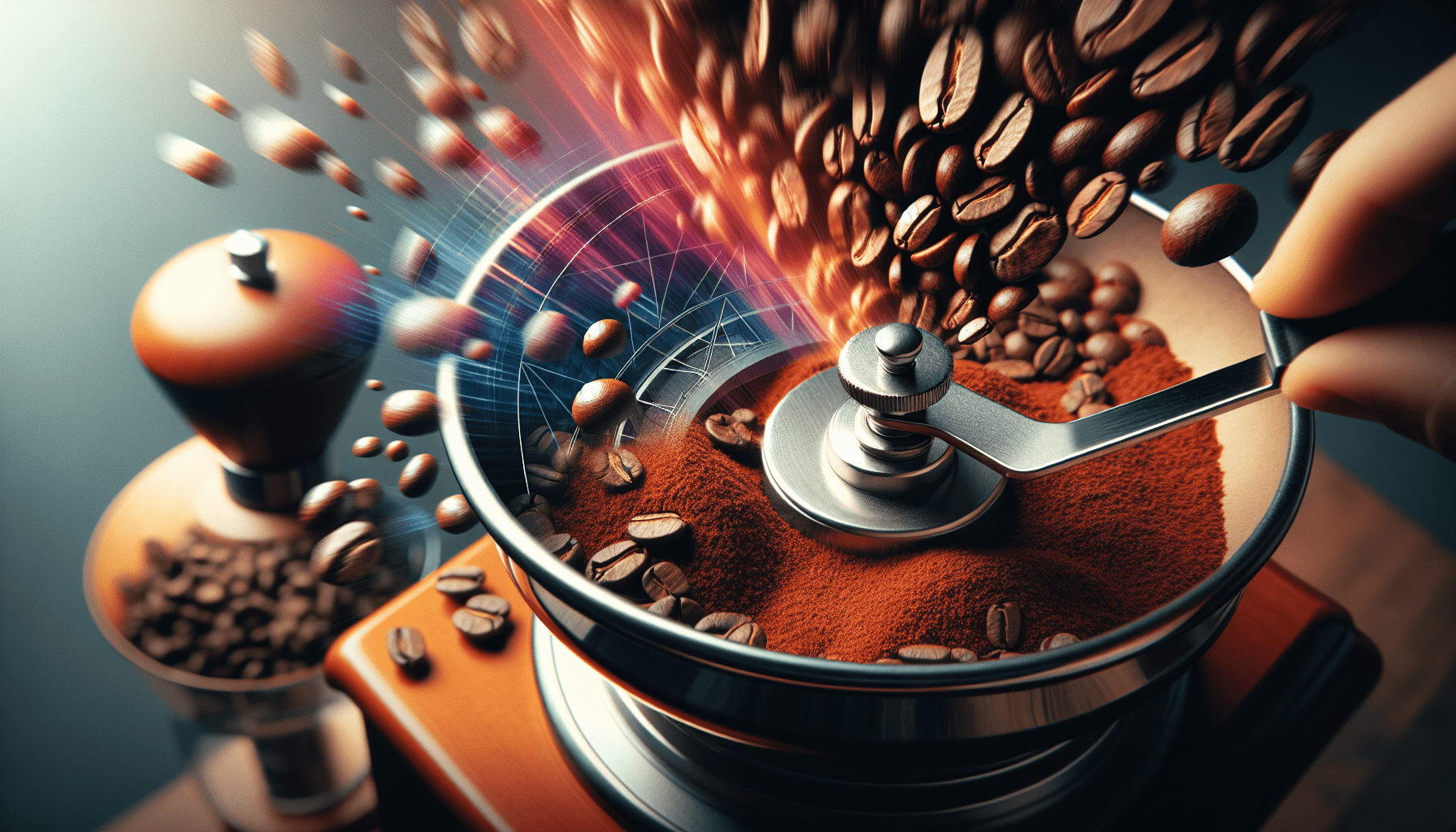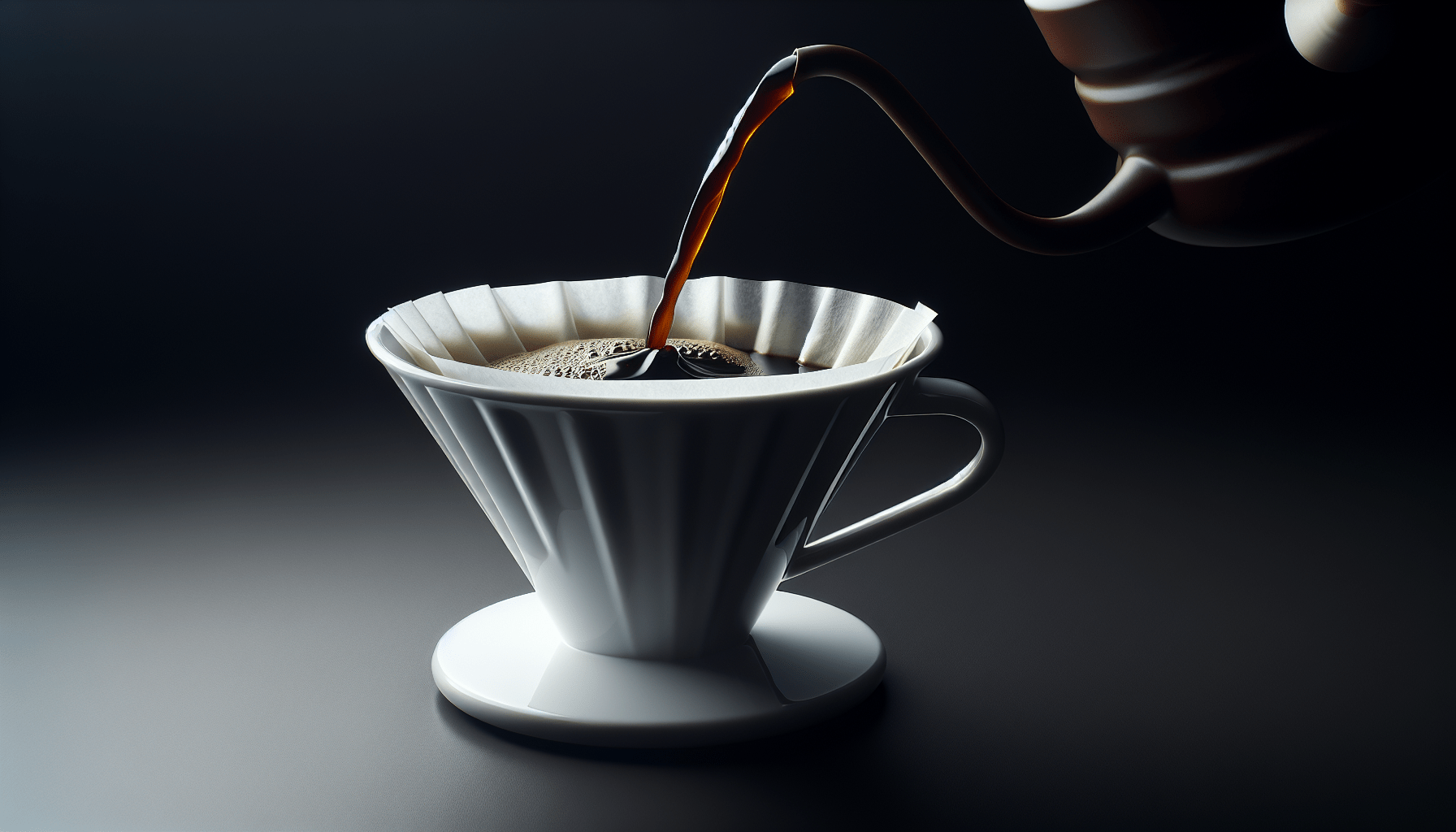You love savoring a perfect cup of coffee brewed using a pour-over coffee maker, but you sometimes find that your coffee tastes bitter or overly strong. The culprit might be over-extraction, a common issue when brewing with this method. But fear not, as we have some simple yet effective tips to help you prevent over-extraction and achieve a well-balanced and flavorful cup of pour-over coffee every time. So, grab your favorite mug, and let’s dive into the world of coffee brewing techniques and secrets.
Choosing the right grind size
Grind size plays a crucial role in the quality and flavor of your pour-over coffee. The size of the coffee grounds affects the rate of extraction during brewing. If the grind size is too fine, the water may have difficulty passing through, resulting in over-extraction. On the other hand, if the grind size is too coarse, the water may pass through too quickly, leading to under-extraction. Finding the right grind size is key to achieving a balanced and flavorful cup of coffee.
Experimenting with different grind sizes
To determine the optimal grind size for your pour-over coffee, it’s important to experiment with different settings on your coffee grinder. Start with a medium-coarse grind size, and gradually adjust it finer or coarser until you find the sweet spot. Keep in mind that different coffee beans and brewing methods may require slightly different grind sizes, so don’t be afraid to adjust accordingly.
Using a burr grinder for consistent results
When it comes to grinding coffee beans for pour-over brewing, using a burr grinder is highly recommended. Unlike blade grinders, which chop the beans unevenly, burr grinders crush the beans between two burrs, resulting in a more consistent grind size. This consistency ensures that the water evenly extracts the flavors from the coffee grounds, leading to a more balanced and flavorful cup of coffee.
Controlling water temperature
Water temperature is another crucial factor that can greatly impact the taste of your pour-over coffee. The ideal water temperature for pour-over brewing is between 195°F and 205°F (90°C – 96°C). Water that is too hot can over-extract the coffee, resulting in a bitter taste, while water that is too cool may under-extract the coffee, leading to a weak and insipid brew.
Avoiding boiling water
To achieve the right water temperature, it’s important to avoid using boiling water for pour-over brewing. Boiling water can scorch the coffee grounds, resulting in off-flavors and a harsh bitterness. Instead, allow the water to cool for about 30 seconds after reaching a boil to bring it to the ideal temperature range.
Using a thermometer to measure water temperature
To ensure you’re using water within the recommended temperature range, it’s helpful to use a thermometer. This will allow you to accurately measure the water temperature and make any necessary adjustments. Insert the thermometer into the water before pouring it over the coffee grounds to ensure it falls within the desired range.
Mastering the pour technique
The way you pour the water over the coffee grounds plays a significant role in the extraction process and the resulting flavor of your pour-over coffee. It’s important to practice a slow and steady pour to allow for an even extraction and avoid over-agitation of the coffee bed.
The importance of a slow and steady pour
When pouring water over the coffee grounds in a pour-over brewer, it’s crucial to maintain a slow and steady pour. This allows for a more consistent extraction and helps prevent channeling, where water bypasses the coffee bed and results in uneven extraction. A slow and steady pour also helps control the contact time between water and coffee, leading to a more balanced cup of coffee.
Applying the blooming technique
The blooming technique is a crucial step in pour-over brewing that involves saturating the coffee grounds for a short period before continuing with the pour. This helps release trapped carbon dioxide, expands the coffee bed, and ensures even extraction. To bloom your coffee, simply pour a small amount of water over the coffee grounds, enough to wet them thoroughly without too much runoff. Allow the coffee to bloom for about 30 seconds before proceeding with the main pour.
Maintaining a consistent pour speed
Consistency in the pour speed is essential for achieving a balanced brew. Aim for a constant, controlled flow of water throughout the entire pour to ensure that all the coffee grounds are evenly saturated. Avoid rushing the pour or creating turbulence in the brewer, as this can lead to uneven extraction and potentially over-extract the coffee.
Adjusting coffee-to-water ratio
The ratio of coffee to water is a crucial element in pour-over brewing. Finding the right balance is key to achieving a flavorful and well-extracted cup of coffee. The optimal coffee-to-water ratio can vary depending on personal preference, coffee freshness, and grind size.
Finding the right balance
When determining the coffee-to-water ratio, it’s essential to find a balance that suits your taste preferences. Start with a ratio of 1:15 (1 gram of coffee to 15 grams of water) as a baseline and adjust from there. If the result is too weak or watery, increase the coffee-to-water ratio slightly. Conversely, if the coffee tastes too strong or bitter, decrease the ratio.
Measuring coffee and water accurately
To ensure consistency in your pour-over brewing, it’s important to measure both the coffee and water accurately. Use a kitchen scale to weigh the coffee and water, as volume measurements can be imprecise. This allows for more precise adjustments and consistent results.
Experimenting with different ratios
Don’t be afraid to experiment with different coffee-to-water ratios to discover your preferred flavor profile. Some people prefer a stronger brew with a higher coffee-to-water ratio, while others may prefer a milder cup with a lower ratio. Pay attention to how the taste and extraction change as you adjust the ratio, and make note of your preferred ratios for future reference.
Avoiding agitation during brewing
Agitation during brewing can disrupt the coffee bed and lead to over-extraction. It’s important to handle the pour-over device gently and avoid unnecessary stirring or swirling.
Understanding the impact of agitation
When water agitates the coffee bed excessively, it can lead to uneven extraction and the extraction of undesirable flavors. This can result in a bitter or astringent taste in the final cup. To avoid this, pour the water gently and evenly over the coffee grounds without creating unnecessary turbulence.
Pouring gently and evenly
To minimize agitation, pour the water in a controlled, circular motion, evenly saturating all the coffee grounds. Avoid pouring too aggressively or from too high above the brewer, as this can disturb the coffee bed. The goal is to pour in a way that maintains the immersion of the coffee grounds without causing excessive agitation.
Avoiding stirring or swirling too much
While some agitation during the blooming stage is necessary to ensure even extraction, it’s important to avoid excessive stirring or swirling throughout the brewing process. These actions can lead to over-agitation and disrupt the coffee bed, resulting in an uneven extraction and potential over-extraction of the coffee. Instead, focus on pouring the water evenly and allowing it to do the work of extracting the flavors from the coffee grounds.
Choosing the right pour-over device
There are various pour-over devices available on the market, each with its own unique characteristics and brewing style. It’s important to consider these factors when selecting the right pour-over device for your brewing needs.
Considering the characteristics of different pour-over devices
Different pour-over devices, such as the Hario V60, Chemex, and Kalita Wave, have varying characteristics that can impact the flavor and brewing process. The size and shape of the brewer, as well as the design of the filter, can influence the flow rate, extraction, and overall flavor of the coffee. Take the time to research and understand the unique qualities of each device before making a decision.
Selecting a pour-over device that suits your brewing style
Consider your personal brewing preferences and the flavor profiles you enjoy when choosing a pour-over device. Some devices, like the Hario V60, are known for producing a brighter and more delicate cup, while others, like the Chemex, produce a clean and full-bodied brew. Experimenting with different devices can help you discover the one that best suits your taste preferences.
Exploring various pour-over device options
Don’t limit yourself to just one pour-over device. Exploring different options can add variety to your brewing routine and allow you to experience the unique characteristics of each device. Each pour-over device offers a distinct brewing experience and flavor profile, so feel free to experiment and find your favorites.
Monitoring the brewing time
The brewing time for your pour-over coffee can greatly impact the taste and extraction. It’s important to understand the ideal brewing time for your preferred pour-over method and make adjustments accordingly.
Understanding the ideal brewing time for your pour-over method
Different pour-over methods have different recommended brewing times. For example, the Hario V60 typically requires a total brew time of around 2-3 minutes, while the Chemex may take a bit longer at about 4-5 minutes. Understanding the ideal brewing time for your chosen method will help you achieve the desired flavor and extraction.
Using a timer to track brewing time
To ensure consistency and accuracy in your brews, it’s helpful to use a timer to track the brewing time. This helps you monitor and control the brewing process, making precise adjustments as needed. Start the timer as soon as you begin pouring water onto the coffee grounds, and stop it when the desired brewing time has been reached.
Adjusting brewing time based on taste
It’s important to remember that brewing time can vary depending on factors such as grind size, coffee-to-water ratio, and personal taste preferences. Pay attention to the flavor of your coffee and make adjustments to the brewing time if necessary. If the coffee tastes over-extracted or bitter, try shortening the brewing time. Conversely, if it tastes weak or under-extracted, extend the brewing time slightly.
Using fresh and quality beans
The quality and freshness of the coffee beans are essential for achieving a flavorful and well-extracted cup of pour-over coffee. Ensure you’re using beans that are both fresh and of high quality.
The influence of coffee bean freshness on extraction
Freshly roasted coffee beans contain more volatile compounds that contribute to the aroma and flavor of the coffee. As coffee beans age, these compounds slowly deteriorate, resulting in a loss of flavor and complexity. It’s best to use coffee beans within a week or two of the roast date to ensure optimal freshness and extraction.
Storing coffee beans properly
To preserve the freshness and flavor of your coffee beans, it’s important to store them properly. Keep the beans in an airtight container away from light, heat, and moisture. Avoid freezing or refrigerating the beans, as this can introduce condensation and negatively affect the flavor. Instead, store them in a cool, dark place, such as a pantry or cupboard.
Choosing high-quality beans for better flavors
Quality beans can make a significant difference in the flavor of your pour-over coffee. Look for beans that have been sourced from reputable coffee farms and roasted by experienced roasters. Specialty coffee beans often offer a wider range of flavors and complexities, allowing you to experience the full potential of your pour-over brewing.
Properly maintaining your pour-over equipment
Regular maintenance of your pour-over coffee maker is essential to ensure consistent brewing and prevent the buildup of coffee residue, which can negatively impact the flavor of your coffee.
Regularly cleaning your pour-over coffee maker
After each use, rinse the pour-over brewer with hot water to remove any remaining coffee grounds. It’s also recommended to clean the brewer thoroughly at least once a week using a mild dish soap and a non-abrasive brush.
Avoiding buildup of coffee residue
Over time, coffee residue can build up in the pour-over brewer, affecting the taste and flow rate of your coffee. Regular cleaning and occasional descaling can help prevent this buildup and maintain the optimal brewing conditions.
Replacing worn-out filters and parts
If you notice any signs of wear or damage to the filter or other parts of your pour-over coffee maker, it’s important to replace them promptly. Damaged or worn-out filters can result in inconsistent extraction and potential over-extraction.
Seeking guidance from experienced baristas
If you’re looking to further improve your pour-over brewing skills, don’t hesitate to seek guidance and advice from experienced baristas. They can offer valuable tips, techniques, and recommendations based on their expertise.
Visiting local coffee shops for tips and advice
Local coffee shops are a great resource for learning about pour-over brewing. Baristas are often passionate about their craft and willing to share their knowledge and expertise. Strike up a conversation, ask questions, and even attend any workshops or coffee tasting events they may offer.
Attending workshops or training sessions
Many coffee shops and roasteries offer workshops or training sessions specifically focused on pour-over brewing techniques. These sessions can provide hands-on experience, guidance, and personalized feedback to help improve your skills and enhance your understanding of the brewing process.
Asking for recommendations and guidance
Don’t be shy about asking for recommendations and guidance from baristas. They can offer suggestions on coffee beans, grind sizes, brewing techniques, and more. Building a relationship with your local coffee community can be a wonderful way to deepen your appreciation for pour-over brewing and continue refining your skills.




